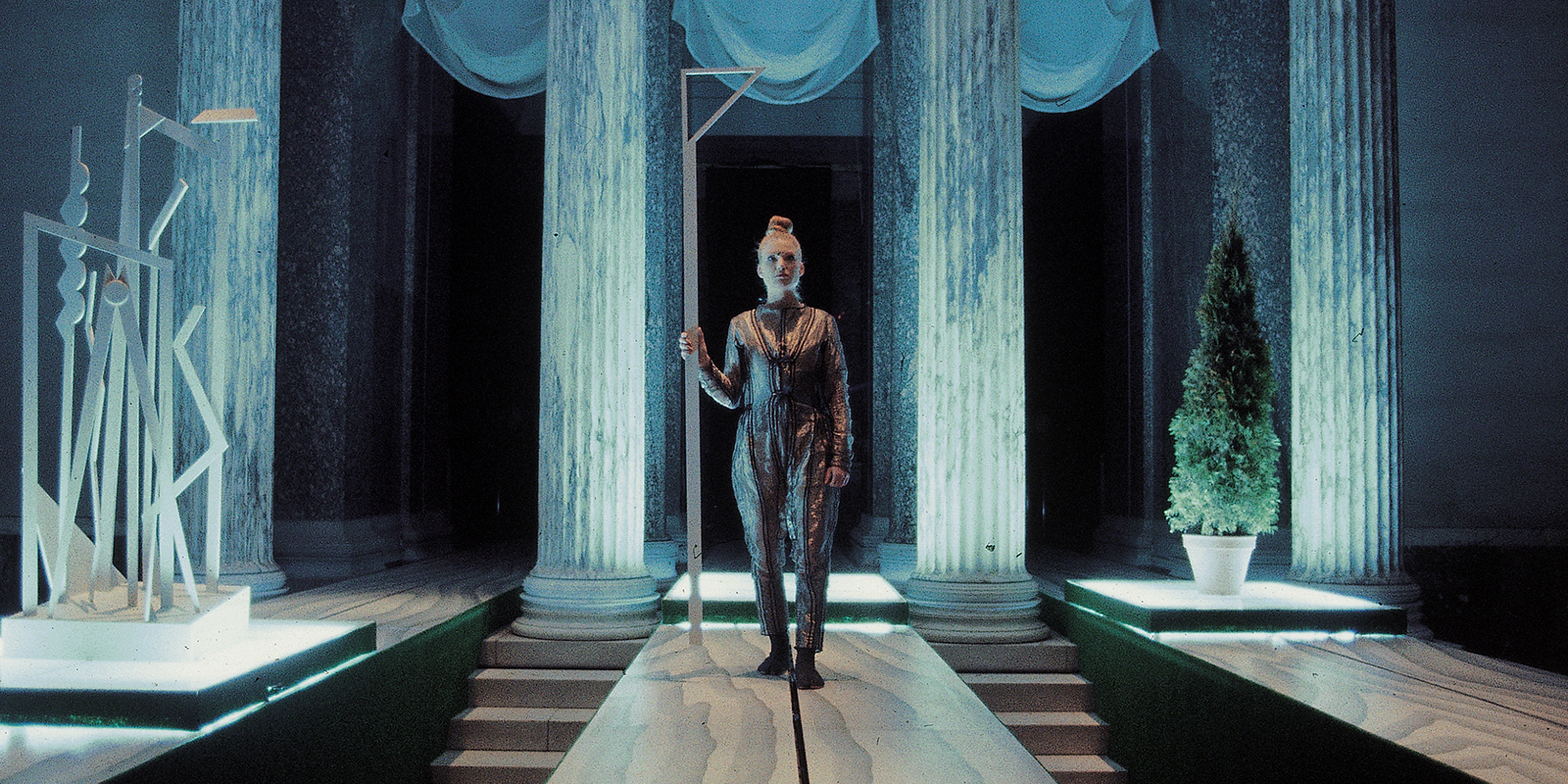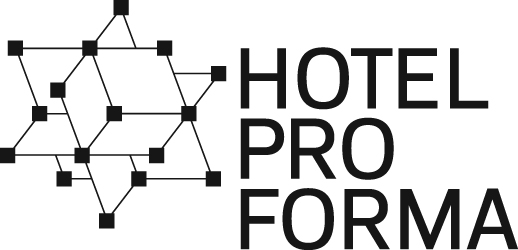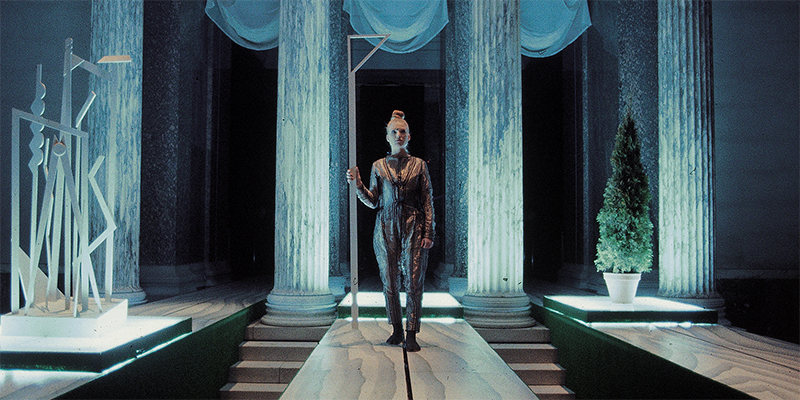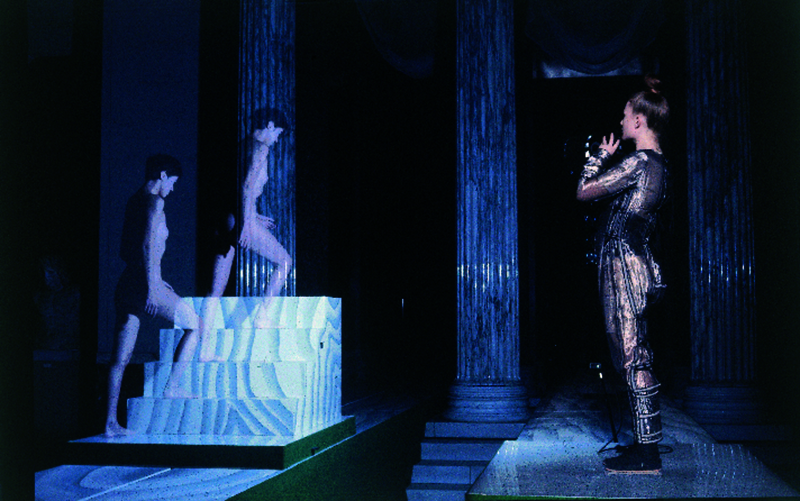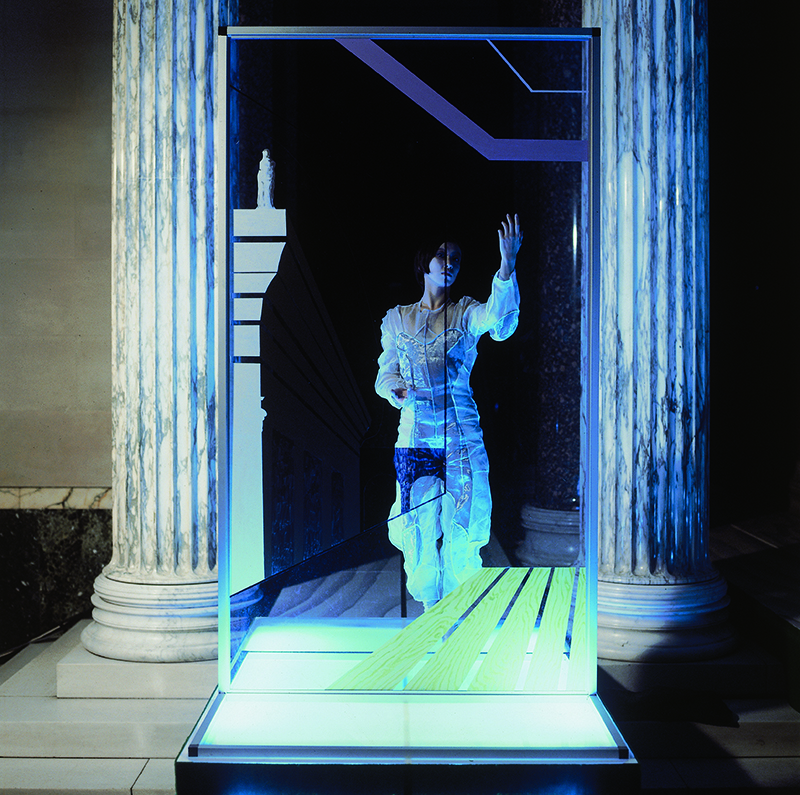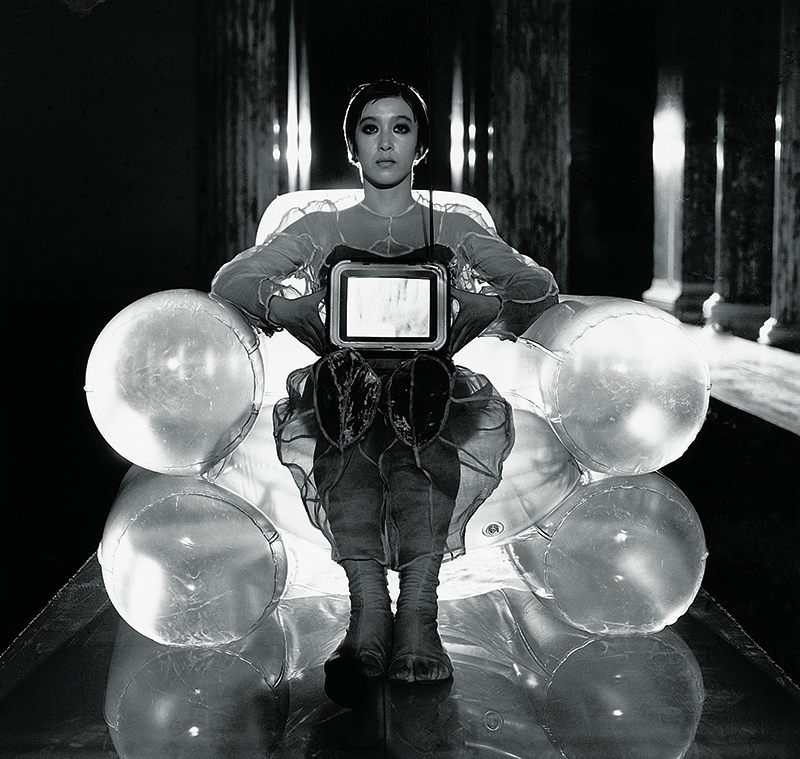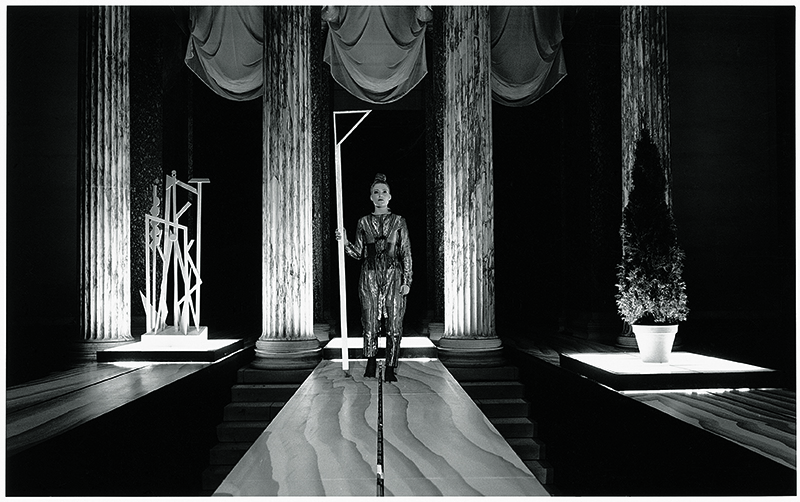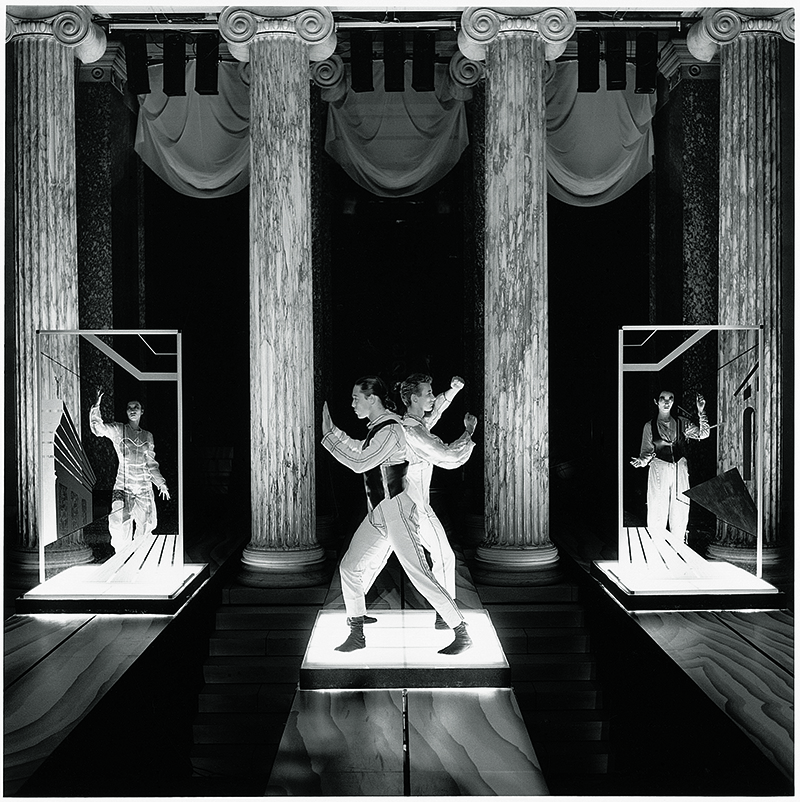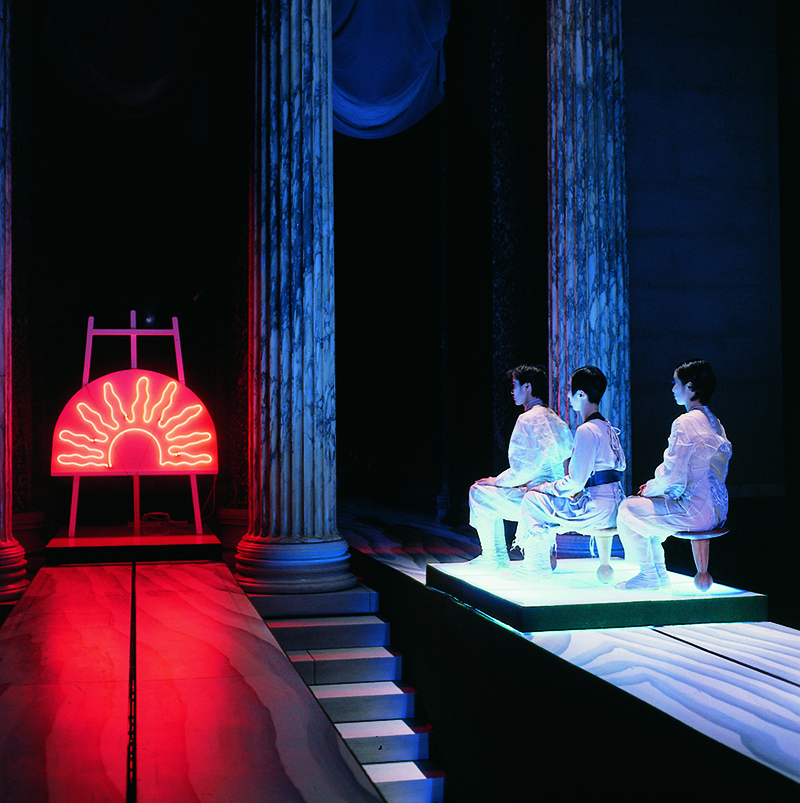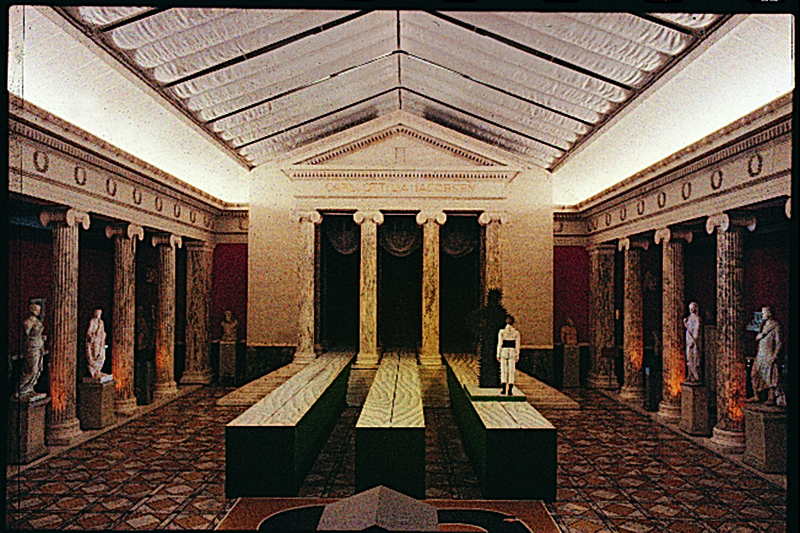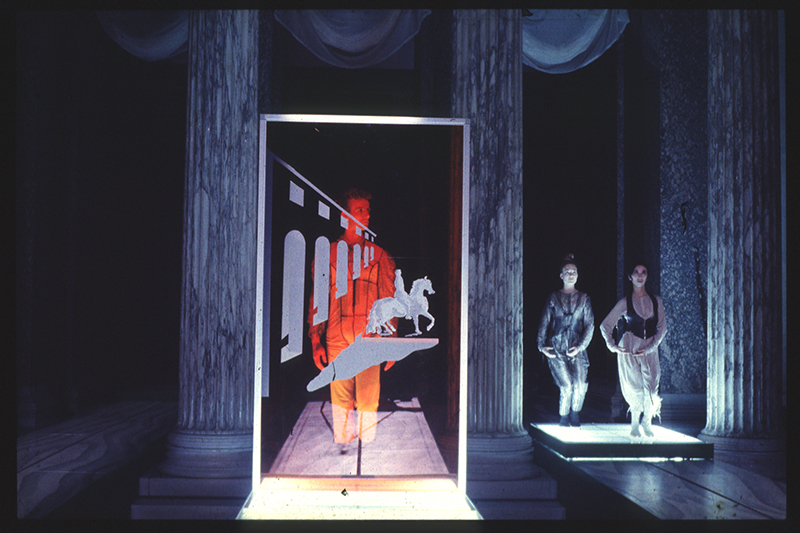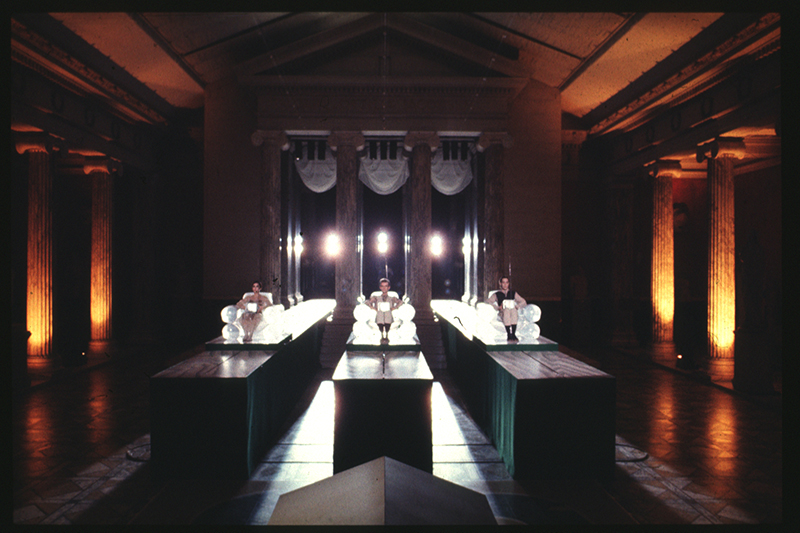Enigmatic Beauty
By Poul Borum
Kirsten Dehlholms theatre performances are always sensationally different. The method is to join highly different areas or plans –and from these an enigmatic beauty emerges. It is directly and programmatically declared in the title of her new performance, which can – and should be seen at the Glyptotek until Oct. 25.
The most obvious new aspect of this performance is beyond doubt consequence of the collaboration with the three young Japanese artists, forming the performance theatre Dumb Type. They are the ones responsible for the technological miracles, that to a high extend makes this full hour in the beautiful hall of the museum to such a unique experience. Down through the hall from the columns, three oblong platforms emerge, reminding of those known from fashion shows. On these computercontrolled trolleys with the seven performers – three Japanese and four Danish – move back and forth dressed up in Annette Meyers costumes, which in themselves are worth while the evening.
And Tomas Lahodas set design continuously I s covered by projected figures and numbers filling the back wall and the whole space. Adding to this a persistent, synthetic Italian pop music seemingly softens the whole thing.
Thus it is both a performance and an exhibition and a light-and sound show. Where image after image departs from modern art – especially the Italian mystic, pre-surrealist de Chirico. The titles on the singular sequences one can read in the program. But they are not “about” anything. It shows. It is. And it is oddness and beauty.
This is why the parallel to the fashion show is not quite wrong. In that context everything is about being beautiful. – and the performances of Hotel Pro Forma cultivate the same kind of beauty, but elevated to one possible form of truth, Theatre.
Original, eye-widening, important theatre. In Copenhagen
Rebus
By Monna Dithmer, Politiken
Images put into effectful movement by Hotel Pro Forma and Japanese Dumb Type but without joining composition.
The main characters in The Enigma of the late Afternoon are three illuminated constructions. Via computer control they move back and forth on the green, marbled constructions that emerge into the room from the majestic columns of the banqueting hall of the Glyptotek. A simple voyage in time and space, back and forth, a before and a now.
Meanwhile the statuelike figures mount the trolleys or move in front or behind them or next to them. A dance of precision between man and machine. United in the common purpose to create images in motion. A tricky study of art: surface, depth, composition, figures, objects – and adding time, the element normally left out of the picture.
The whole art is presented with a disarming impertinence as a question about the technique of illusion – like when the whole impressive façade of columns is covered by a slide and emerges as a magic black surface, measured out in numbers.
A sequence of eleven tableaux emerge on the constructions with titles such as “Torsos”, “Grand Archeologists”, and “Spetacolo Mysterioso”, rolling along on neon illuminated trolleys of advertisement, from left to right. The advancing lines of contra reading.
Direction and timelines are not as fixed as the rectangular symmetric arrangements and the carved sense of the passed at a first glance could signal.
Under the constructions –crossing the whole thing – a mini train drives in its own elliptic lane.
A dead serious humour penetrates the language of images, just like there has been set electricity to the procession- and tableau character by means of Italian pop music and computerized junk-sound in the pulse of the piston.
Figures ad trolleys emerge: live statues in toga-clothes with reverence to the stiffened comrades in the hall, elevated mannequins posing with the precision of somnambulists or robot like creatures in metallic dresses with their sight fixed on the infinite.
And yet there are small fractures inserted, which make the image crack: a model emerges with small geisha steps and a flie killer swinging in her hand; a woman “plays” with a light green ball in a string – the arm throws the ball up and down in a mechanic St. Vitus dance; a sunset –tableau shows three performers in picturesque profile moving back and forth on the trolley, while watching the neon-sun on the easel.
Also the more precise art historical references are served with dead pan humour. Giorgio de Chirico´s metaphysically stripped off town spaces painted on transparent plexi glass with Japanese gogo dances behind. Or Duchamp´s “Nude descending the Staircase” served with as well the staircase as the nude in movement, but in hasty flashing stroboscopic light making it difficult to grasp. The study of the nude body in movement evolved to a pure study of time.
In spite of the conciseness of the single images in terms of aesthetic language and technical precision, Kirsten Dehlholm, Tomas Lahoda and the Dumb Type people do not succeed in gathering them to a coherent composition. Not only does the rhythm of the performance seem to depend too much on the technical side, but the tableaux have a tendency to fall apart as singular, static statements.
A special enigmatic atmosphere does not radiate from them, apart from the fact that it is not possible to see any obvious connection between them.
In terms of performance theatre it is however absolutely worth seeing, in understanding with the fact that theatre (from the Greek theastai) basically is about seeing. The constellation of the feeling for the space of Hotel Pro Forma, and the computer aesthetic of Dumb Type really can produce scenic images of astonishing power. Strongest in the tableau, where three transparent inflatable plastic chairs move through the space each carrying a figure presenting on their lap a TV monitor with the image of heart and lungs. Insight to the inner sphere of the body via the technique and transformed into movement and time.
Amazing art and here with an unmistakable touch of enigma.
